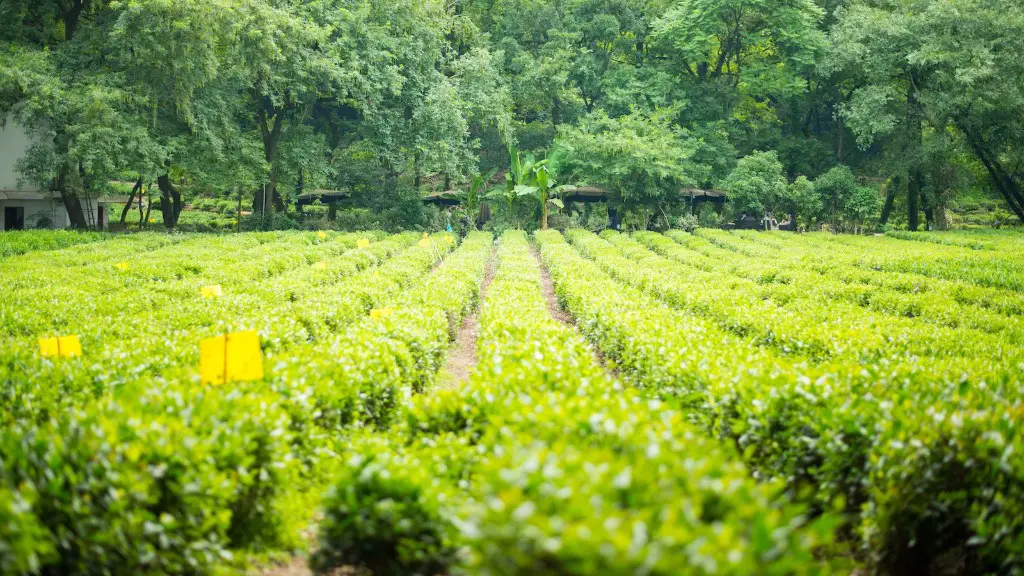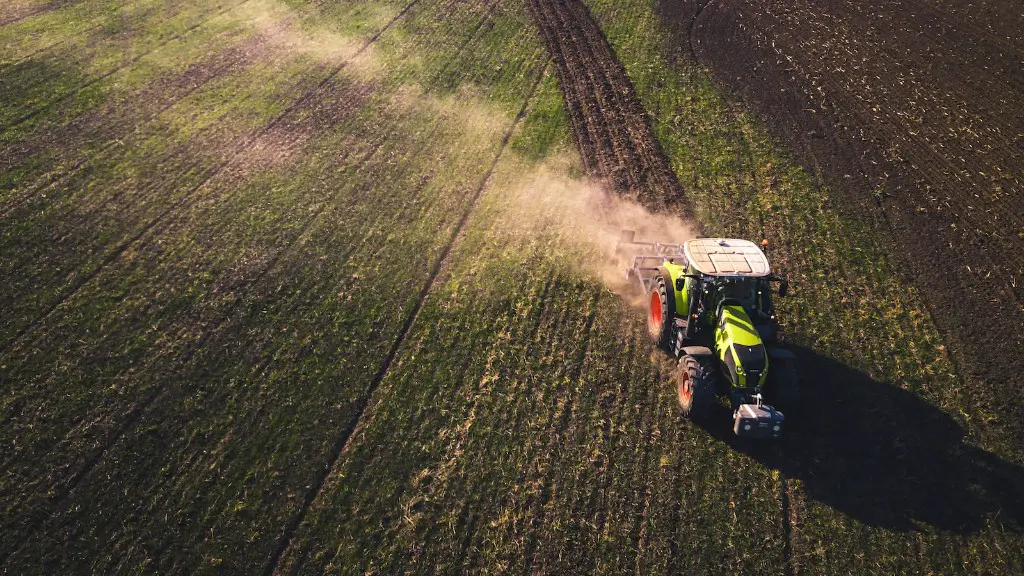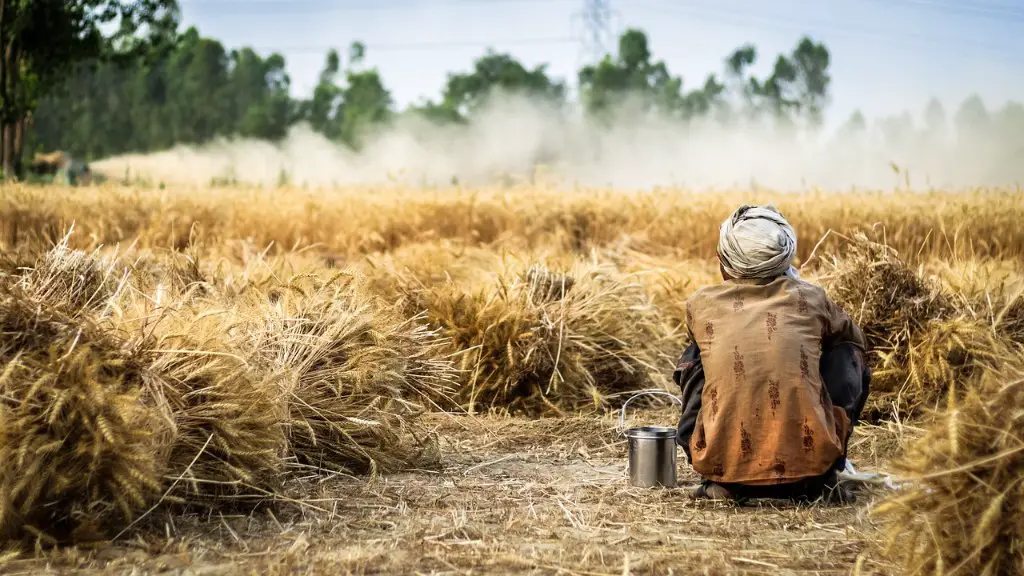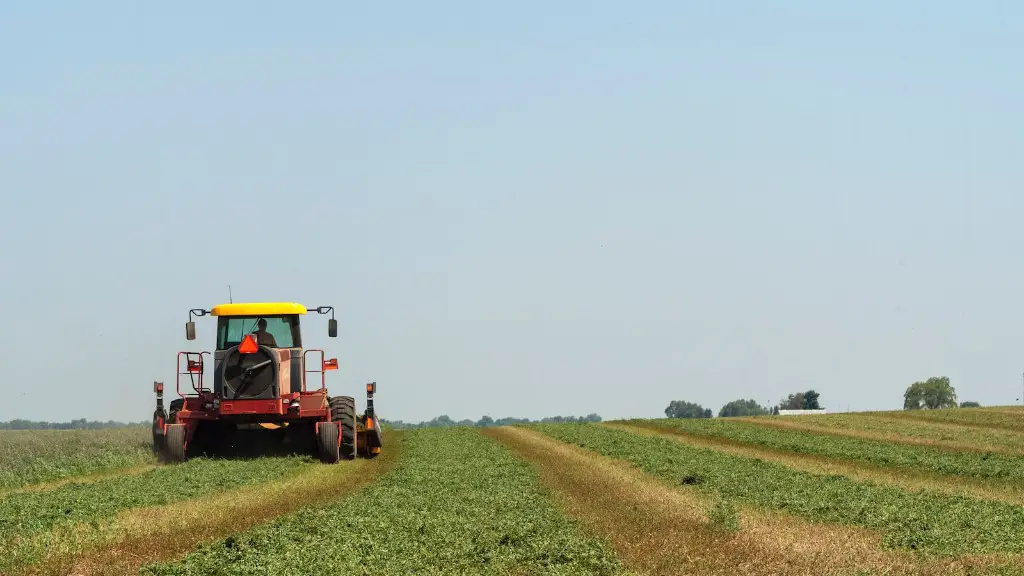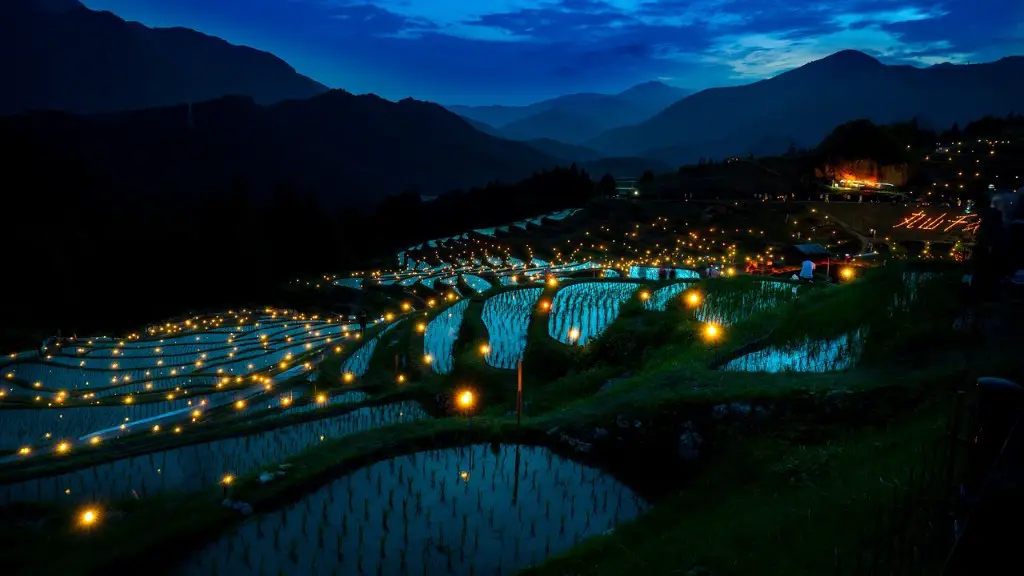The water cycle is the process by which water is circulated throughout the Earth. It is a process that is vital to the environment and to the agricultural industry. The water cycle begins when water evaporates from the surface of the Earth. The water vapor then rises into the atmosphere and condenses into clouds. The clouds eventually release the water in the form of precipitation. The precipitation falls back to the surface of the Earth, where it replenishes the water supply. This water is then available for plants to absorb through their roots. The water that is not absorbed by the plants eventually evaporates, and the cycle begins anew.
Water is essential for growing crops, and the water cycle is the process that ensures a continual supply of water. The water cycle begins with evaporation, where water is vaporized from the surface of the earth, including from leaves and soil. The water vapor then condenses into clouds, which eventually precipitate back to the earth in the form of rain or snow. Some of the precipitation soaks into the ground, where it is taken up by plants root systems and becomes part of the plant. The water that is not taken up by plants flows back into rivers, lakes, and oceans, where the cycle begins again.
Agriculture is heavily reliant on the water cycle for irrigation. Farmers need to carefully monitor precipitation levels to ensure that their crops have enough water. If there is not enough rainfall, farmers may need to supplement with irrigation. Too much precipitation can also be damaging to crops, as it can lead to flooding and soil erosion.
How is agriculture involved with the water cycle?
Agricultural activities need to be managed properly in order to avoid impacting surface water quality. Fertilizer and pesticide use, as well as tillage, irrigation, and tile drainage, can all affect water quality and hydrology. Improper management of these activities can lead to the contamination of surface water with nutrients, pesticides, sediment, and bacteria. This can in turn adversely affect the ecology of the affected water body and the health of those who rely on it for drinking, bathing, and other activities.
The hydrologic cycle is the process that describes how water moves around on, above, and below the surface of the Earth. The main driving force behind the hydrologic cycle is the sun. The sun’s energy drives evaporation, which is the process of water turning into vapor. Once water vapor is in the atmosphere, it can rise and cool, forming clouds. When the clouds get too heavy, they will release precipitation in the form of rain, sleet, hail, or snow. This precipitation will eventually make its way back to the surface of the Earth, where it will either soak into the ground or flow over the land as surface water.
How does agriculture negatively affect the water cycle
Excessive irrigation can have a negative impact on water quality by causing erosion, transporting nutrients, pesticides, and heavy metals, or decreasing the amount of water that flows naturally in streams and rivers.
The depletion of water availability in soils can have significant negative impacts on crop and livestock productivity. In addition, during periods of drought, surface and groundwater supplies may decline, which can lead to increased costs for irrigation and watering livestock.
How agriculture is affected by water scarcity?
The agriculture sector is the biggest user of water globally, accounting for 70% of all water use. In many OECD countries, this figure is even higher, with agriculture accounting for over 40% of all water use. Intensive groundwater pumping for irrigation is one of the biggest drivers of water depletion, and can lead to negative environmental impacts, causing significant economic damage to the sector and beyond.
It is estimated that 70% of the world’s fresh water is used by farmers. Of that 70% used by farmers, 40% is lost to the environment due to poor irrigation systems, evaporation, and overall poor water management. This is a significant issue because it means that farmers are not able to use all of the water that they have available to them, and as a result, they are losing a valuable resource. In order to address this issue, it is important for farmers to invest in better irrigation systems and water management practices.
Why does agriculture lose so much water?
As the demand for food crops continues to rise, so does the demand for water. Poor irrigation practices lead to the loss of a large amount of water, approximately 40%. Plants need water for every stage of growth, from seeding to harvest. Improving irrigation practices is essential to meeting the demand for food crops and conserving water resources.
Agriculture is the leading source of pollution in many countries. Pesticides, fertilizers and other toxic farm chemicals can poison fresh water, marine ecosystems, air and soil. They also can remain in the environment for generations.
How is agriculture affected by floods
Heavy rains and resulting floods can wreak havoc on harvests, delaying them, submerging and killing crops and pastures, and spoiling produce. Such events can have a severe impact on production.
One of the most important factors for a successful crop is maintaining a good balance of rain and irrigation. Too much or too little of either can lead to problems. For example, if there is not enough rain, the ground can become too dry and cracked, which makes it difficult for seeds to germinate and grow. On the other hand, if there is too much rain, the ground can become waterlogged and stunted the growth of the plants.
It is important to have a proper irrigation system in place in order to ensure that the crops get the right amount of water. Faster-growing plants can be an indicator that the balance of rain and irrigation is good. This can lead to shorter periods of time between seeding and harvest.
How much water goes to agriculture?
In most regions of the world, over 70 percent of freshwater is used for agriculture. This includes irrigation, raising livestock, and growing crops. With the world’s population continuing to grow, the demand for food will only increase. Therefore, it is essential to use water wisely in agriculture. This includes using efficient irrigation systems and drought-resistant crops.
Meat is one of the most water-intensive agricultural products. The water footprint of beef is about 15,415 liters per kilogram, which is more than double the water footprint of pork or chicken.
Does agriculture require a lot of water
The agricultural sector by far is the the single biggest user of freshwater resources in Africa and Asia. According to a report by the World Water Council, an estimated 85-90% of all fresh water used is for agriculture. The majority of this water is used for irrigation, with only a small percentage used for domestic purposes.
The report estimates that for the year 2000, agriculture accounted for 67% of the world’s total freshwater withdrawal, and 86% of its consumption. With the world’s population expected to grow by over 2 billion people by 2050, the demand for water is only going to increase.
It is essential that we find ways to use water more efficiently in agriculture. Some options include using more drought-resistant crops, investing in irrigation infrastructure, and better managing water resources.
The factors influencing agriculture are climate, soil type, irrigation, technology, and population density. All of these factors play a role in how successful farmers are in producing crops. Climate can impact the amount of rain or snow fall, which can either be beneficial or detrimental to the growth of crops. Soil type is important because different crops require different types of soil in order to grow. Irrigation is also a key factor, as it can provide the crops with the water they need to survive and grow. Technology plays a role in agriculture as well, as it can help farmers to be more efficient and effective in their work. Finally, population density is important because it can impact the demand for food and the availability of land to grow crops.
What are 3 effects of agriculture?
While the development of agriculture can have positive effects on the natural life, climate and oxygen production in a region, it can also lead to inorganic nitrate pollution, pesticide pollution and salinity problems. These negative effects are most often seen in regions where agriculture is carried out intensively.
There are a number of problems that are common in the agricultural sector in India. Unemployment, waterlogging in wetland areas, salinity in arid and semi-arid areas, acidity in high rainfall areas, pests (like weeds, diseases, and insects), and erratic rainfall distribution are the most common problems. In addition, the country’s agriculture highly depends on rain-fed.
How does drought and floods affect agriculture
Drought and flood are both major reasons for soil dryness in fields, which severely restricts field crop yields. Drought induces agricultural drought, while flood brings excessive soil water. Both of them have a huge impact on agriculture.
While agriculture can have negative impacts on the environment, it can also have positive impacts. Agriculture can trap greenhouse gases within crops and soils, or mitigate flood risks through the adoption of certain farming practices. These positive impacts can help offset the negative impacts of agriculture and improve the overall environmental health of the planet.
Conclusion
The water cycle plays a critical role in the agricultural process. Plants require water for photosynthesis, which is how they convert sunlight into energy. In order for photosynthesis to take place, water must be present in the plant’s leaves. This water comes from the roots, which absorb water from the ground. The water then moves up through the plant and is released into the atmosphere through the process of transpiration.
The water cycle also affects agriculture by providing water for irrigation. When water evaporates from the ground, it leaves behind minerals that are essential for plant growth. This process is known as leaching. Irrigation water helps to replenish the water that is lost through transpiration and leaching, providing a continuous supply of water for plants.
The water cycle is a never-ending process that is vital to agriculture. Every day, water evaporates from the earth’s surface and rises into the atmosphere. The sun then heats the water vapor, causing it to condense and form precipitation. Precipitation falls back to the earth, where it either soaks into the ground or runs off the surface into rivers and lakes. The water cycle is a never-ending process that is vital to agriculture. Every day, water evaporates from the earth’s surface and rises into the atmosphere. The sun then heats the water vapor, causing it to condense and form precipitation. Precipitation falls back to the earth, where it either soaks into the ground or runs off the surface into rivers and lakes. The water cycle is essential to agriculture because it is the main source of irrigation for crops. Without the water cycle, there would be no agriculture.
